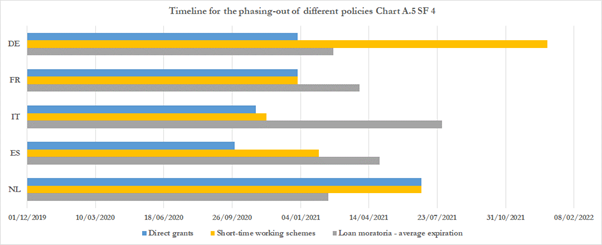
The ESRB & the @EBA_News published their macro scenario for the upcoming bank stress test. What does it look like? Will it finally be credible? And how important will the results be? A thread
Those are important questions, because investors have shrugged the results of the previous tests. Except for distressed banks (e.g. MPS), the results were almost useless – even the EU court of auditors heavily criticized the process.
One criticism often made is that the tests are not severe enough. The comparison with US/UK tests illustrates this (CET1 drawdowns). Of course, there can be good reasons for differences, and u can’t make a stress knowing the outcome you want…but it’s still dubious 

Maybe because of the critics, this time the ESRB went all in: it’s hard to compare the GDP scenarios because this time it comes after a -7.3% recession in the EA, but here’s what the cumulated drop looks like in the new EBA scenario (including the 2020 drop). This is massive. 

Another way to see this, is that it is a -12.9% deviation from the baseline, vs. -7.8% in 2018 or -7.9% in the Pre Covid 2020 scenario. The fact that it drags on for many years is also extremely important in loan loss modelling.
The other metrics are also very harsh: peak unemployment at 12.4% (vs. historical peak at 12%, and 10.3% in the EBA 2018 test), commercial real estate at -30.9% (!!!) vs. -17.7% in EBA 2018 and -23% in the ECB 2020 desktop stress.
Importantly, loan losses on CRE are not linear, because most lenders have 60%-70% LTVs, so when you start to touch that 30% drawdowns, it gets ugly very quickly…
Sovereign risk should not be too much of a headache: we’re looking at the same kind of spread widening for Spain or Italy as in 2018, and banks have increased their share of the book which is not marked to market.
On a country-by-country basis, honestly it’s ugly everywhere…except Ireland. It’s the only country for which assumptions are better than in SSM desktop test, both for GDP and unemployment.
For Aust, Ita, Ger, Neth both scenarios are worse, and for Spa, Fra, Bel & Port GDP is worse and UE a bit better.
What’s the bottom line of all this? In its desktop test, the SSM had approx 200bps of provisions in the base case and 400 in the adverse. Extrapolating suggests we’ll have around 500bps in this test.
Adding a more severe market risk (was -130bps CET1) suggest the average CET1 drawdown could be around -700bps. Comparing with the 2018 results gives a pretty clear view on which banks could show poor outcomes.
Will this ultimately have an impact in real life? A handful of banks could struggle to show they have enough capital in a stress test (precautionary recapitalization anyone?) but more importantly, this could mean that the SSM keeps playing hardball on dividend for some time…
Hey, @WSBChairman, honestly, I don’t know where you can find DeeperF***Value than here!!!
• • •
Missing some Tweet in this thread? You can try to
force a refresh








